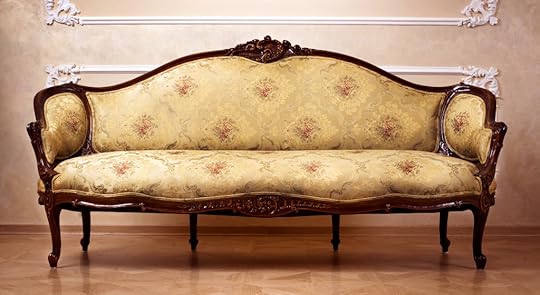Kristin Holt's Blog, page 35
August 23, 2015
Old Fashioned Notions about Marriageable Women
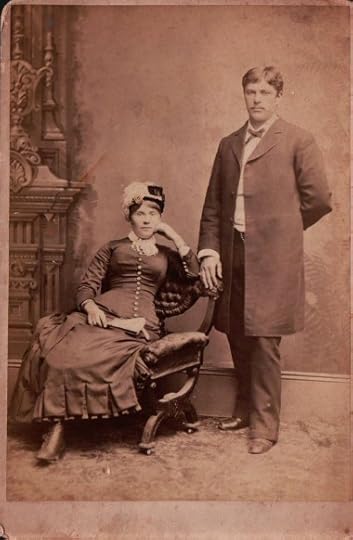
Unidentified couple, probably husband and wife, likely late 19th Century. Cabinet card’s back is stamped “Wm. Shew’s Photographic establishment, No. 523 Kearny Street, San Francisco”. [I own the cabinet card print, purchased on eBay.]
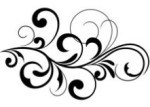
“I hold an old-fashioned notion that a happy marriage is the crown of a woman’s life.” ~Beatrix Potter (1866-1943)

“By God, I may be old-fashioned in my ideas, but women run around too much these days to suit me. They meet all kinds of crazy fish.” ~F. Scott Fitzgerald (1896-1940), The Great Gatsby

“Young men often laugh at the sensible girls whom they secretly respect, and affect to admire the silly ones whom they secretly despise, because earnestness, intelligence, and womanly dignity are not the fashion.” ~ Louisa May Alcott (1832-1888), An Old-Fashioned Girl

“I am trying for nothing so hard in my own personal life as how not to be respectable when married.” ~Mary Heaton Vorce

“A really good housekeeper is almost always unhappy. While she does so much for the comfort of others, she nearly ruins her own health and life. It is because she cannot be easy and comfortable when there is the least disorder or dirt to be seen.” ~ The Household, January 1884

When the first public high school for girls opened in Boston, the American Journal of Education wrote that the school should give “women such an education as shall make them fit wives for well educated men, and enable them to exert a salutary influence upon the rising generation.” ~ Boston High School for Girls, American Journal of Education 1846 (1): 96-105

Related Article: Victorian Attitudes: The Weaker Sex & Education
Related Article: FIRSTS in Female Education, 19th Century American West
Related Article: Education in the Old West
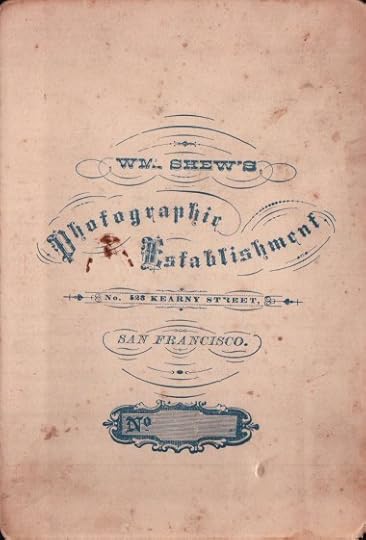
Back side of same cabinet card referenced at top of this article.
Copyright © 2015 Kristin Holt, LC
August 20, 2015
Victorian Attitudes about Female Education, and Conflict in the Historical Romances we Love!

We want to see characters earn their happily-ever-after by surmounting all odds and working for it. We want proof they deserve to win.
Readers Love Conflict
Have you ever read a novel and found it disappointing? Thought not much was happening? Or worse yet, felt the ending and “happily ever after” to be a letdown?
Chances are, the conflict was weak or insignificant.
We want to see characters earn their happily-ever-after by surmounting all odds and working for it. We want proof they deserve to win.
Some of the best books I’ve read still stick out in my mind because of the challenges the main characters faced, battled, stumbled beneath setbacks, and eventually triumphed over.
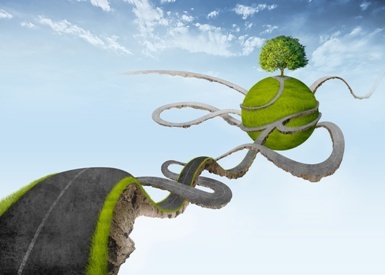
Some of the best books I’ve read still stick out in my mind because of the challenges the main characters faced, battled, stumbled beneath setbacks, and eventually triumphed over.
Educated Heroines Bring Conflict
Victorian attitudes, being what they were, separated the sexes. Women should be nurturers, mothers, wives, and homemakers. Men should be protectors, breadwinners, and if either partner in marriage were to engage in business or education, it would be he.
Many single women hoping to find a spouse between 1865 and 1869 attended college. Ambitious women enrolled in schools across the eastern portion of the states were seeking to become doctors, lawyers, and journalists. Unfortunately for these ladies, men viewed female college graduates as poor homemakers, and the few eligible bachelors around kept their distance from educated ladies.

She is a well-educated, attractive woman and yet, in America she is considered unmarriageable because of the unintended intimidation her knowledge brings forth.
Western (or at least American) Historical Romance With Educated Heroines
It’s easy to understand why men back in the day would feel threatened by a woman braving uncharted territory, essentially commanding the knowledge and expertise of a man. When all the current generation of men had known was women like their mothers and sisters, it could be a mite frightening–and challenging–to find himself entangled with, attracted to (or heaven forbid, married to!) a woman who defied social boundaries.
People were amazed when they learned that a young girl had so far forgotten her womanhood as to want to study dentistry.
It’s not uncommon for the hero in a western historical romance to want a wife for all the traditional reasons. Men sought mail order brides because they were lonely, pined for comforts of home, needed a help-meet, an additional pair of hands to accomplish the work of survival, children to eventually help work the farm, and monogamous (and therefore hopefully clean) sex. Many professed to wanting love.
Men were taught by society and community to expect the marriageable young lady to complete him and his attributes in a complementary fashion.
In the first place, observation proves that selections made in nature by the beasts of the field and fowls of the air, of couples which pair, the male is always the strongest, generally the largest, the most brave and always the leader. The female follows, trusting to her companion, leaving him to fight the heavy battles, apparently confident in his bravery, strength, and wisdom.
If nature teaches anything, it is to what observation and experience in civilized life has also proved correct, that of husband and wife, rightly mated, the husband should represent the positive–the physical forces, the intellectual and the strongly loving; while the wife will represent the negative–the sympathetic, the spiritual, and the affectionate.
~The Essential Handbook of Victorian Etiquette, Professor Thomas E. Hill, p 100
The links, below, represent a small segment of fiction titles that fit this category.
I’ve read one or two, but far from all. Please, selective readers, browse reviews and read the blurbs (book descriptions) and carefully examine before purchasing.
RELATED POST: Victorian Attitudes: The Weaker Sex & Education
RELATED POST: FIRSTS in Female Education, 19th Century American West
RELATED POST: Education in the Old West
The Essential Handbook of Victorian Etiquette, USED COPIES from $0.01 (+S&H)
What western historical romances have YOU read with a strong central conflict caused by the heroine’s education?
Copyright © 2015 Kristin Holt, LC
August 17, 2015
Education in the Old West
Did you know?
1. Most 19th century schooling was done in One Room Schoolhouses, where older pupils assisted the teacher by passing along what they’d learned to younger students.
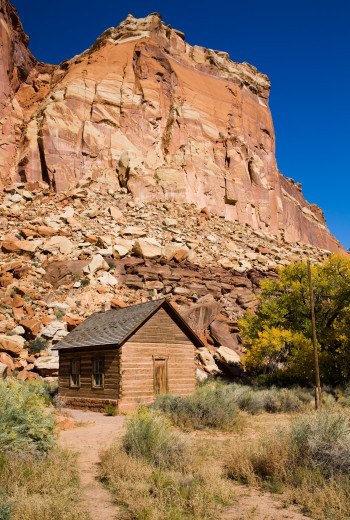
Early wood pioneer one room schoolhouse in the desert of Capitol Reef National Park, southeast Utah
2. By the year 1870, all states had free elementary schools. The US population had one of the highest literacy rates at the time.
3. Private academies flourished in the towns across the country, but rural areas (where most people lived) had few schools before the 1880s, so most children were schooled in basics at home.
4. In 1880, American high schools were preparatory academies for colleges, and only those bound for higher education attended. 7% of youths aged 14 to 17 were enrolled in 1890 (a staggering percentage were in New England states) rising to 32% in 1920. As late as 1940, only 50% of American young adults had earned a high school diploma.
5. In 1821, Boston started the first public high school in the United States. By the close of the 19th century, public secondary schools began to outnumber private ones.
For the rest of the story, see this page.

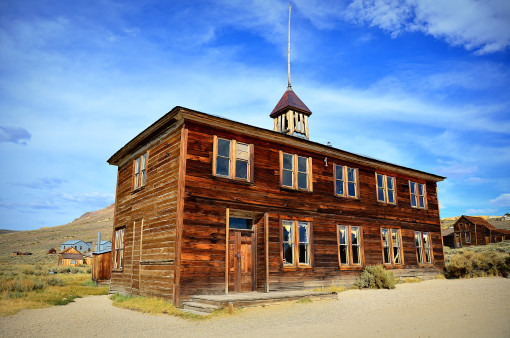
Bodie, California Schoolhouse. In 1876, the Standard Company discovered a profitable deposit of gold-bearing ore, which transformed Bodie from an isolated mining camp comprising a few prospectors and company employees to a Wild West boomtown. Rich discoveries in the adjacent Bodie Mine during 1878 attracted even more hopeful people. By 1879, Bodie had a population of approximately 5000–7000 people and around 2,000 buildings. One idea maintains that in 1880, Bodie was California’s second or third largest city. Bodie boomed from late 1877 through mid- to late 1880. ARCHITECTURAL STYLE: Southwestern U.S. frontier-style, late-19th to early-20th century.
Source for Bodie Schoolhouse label

Old West Education
1. The national illiteracy rate shrank from 20% in 1870 to less than 3% in 1940. Even those born in the Wild West were learning to read and write.
2. Parents often taught their children at home the most basic skills: reading, writing (which are two very different things), and ciphering (arithmetic). Often the only book available to teach little ones to read was the family Bible.
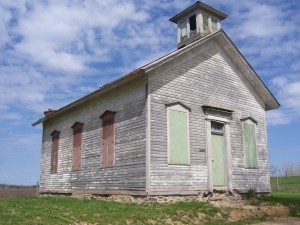
19th Century Country Schoolhouse
3. In highly rural areas, schooling was deemed of secondary importance at times of planting, harvest, and other daylight-exhaustive work. Learning to read could wait for the long, cold days of winter.
4. Teachers in the early decades of the 19th century were usually men. From mid-century on, most One Room Schoolhouse teachers were women, often required to teach upward of 60 students alone. While paid appreciably less than males, women welcomed the escape from a life of drab labor, isolation or frivolity. Teaching gave women a window onto a wider world of ideas, politics and public usefulness.
God seems to have made woman peculiarly suited to guide and develop the infant mind, and it seems…very poor policy to pay a man 20 or 22 dollars a month, for teaching children the ABCs, when a female could do the work more successfully at one third of the price.
— Littleton School Committee, Littleton, Massachusetts, 1849
Coming Next: Victorian Attitudes about Female Education, and Conflict in the Historical Romances we Love!
RELATED POST: Victorian Attitudes: The Weaker Sex & Education
RELATED POST: FIRSTS in Female Education, 19th Century American West
Copyright © 2015 Kristin Holt, LC
August 14, 2015
FIRSTS in Female Education, 19th Century American West

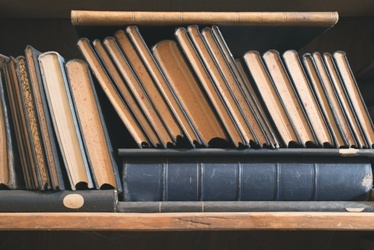

In an article published August 7, 2015, women outnumber men in both undergraduate and post-graduate university programs. American attitudes have changed, significantly, since the late 19th century.
My most recent blog post, Victorian Attitudes: The Weaker Sex & Education, I shared a snippet from history, and the opinion that educating women was not only undesirable, but dangerous to a female’s health. The Victorian Era was not an education-friendly time for women. You’ve come a long way, baby (remember this marketing slogan?). Our Victorian sisters worked tirelessly for equal rights in so many ways, including the right for an equal education and career choices. As a woman who had abundant choices with my own education, I’m in awe of my Victorian counterparts, particularly those who are remembered as those who were FIRST with landmark educational achievements.
Our Victorian sisters worked tirelessly for equal rights in so many ways, including the right for an equal education and career choices. As a woman who had abundant choices with my own education, I’m in awe of my Victorian counterparts, particularly those who are remembered as those who were FIRST with landmark educational achievements.

FIRSTS in Female Education, 19th Century American West
1. In 1827, The Linden Wood School for Girls of St. Charles, Missouri, became the first center west of the Mississippi (for Higher Education) to enroll women.
2. In 1848 the Seneca Falls Convention was held in New York to gain support for education and suffrage but it had little immediate impact because at that time women were still considered the property of men rather than individuals in society. This convention is significant because it created a foundation for efforts toward equal education for women, even though it was not actually achieved until much later.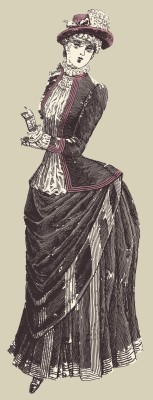
3. In 1850, The Woman’s Medical College of Pennsylvania was the first medical institution in the world established to train women in medicine and offer them the M.D. degree. (Note: men were not allowed to enroll until 1870.)
4. The University of Deseret‘s first classes were taught in 1850, and by their second term, women were included among enrolled students.
5. In 1851, (then) “College of Notre Dame” was the first women’s college in California and the first in the state authorized to grant the baccalaureate degree to women. At this time, most universities and colleges accepting female students were in eastern states.
6. 1851: The Cherokee Female Seminary was the first institute of higher learning exclusively for women the United States west of the Mississippi River. Along with the Cherokee Male Seminary, this was the first college created by a tribe instead of the US federal government.
7. Founded in 1852, Mills began as a seminary school known as the Young Ladies’ Seminary. It was originally located in Benicia, California.
8. In 1862, Mary Jane Patterson became the first African-American woman to earn a BA. She earned her degree from Oberlin College.
9. In 1866, Lucy Hobbs Taylor became the first woman to graduate from a dental college (Ohio Dental College).
People were amazed when they learned that a young girl had so far forgotten her womanhood as to want to study dentistry. ~ Lucy Hobbs Taylor
10. In 1870, Ada Kepley became the first American woman to earn a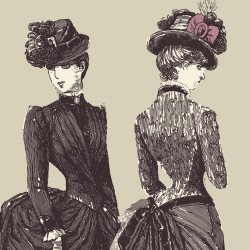 law degree, from Northwestern School of Law in Chicago. However, as a woman, she was denied a license to practice law and therefore never officially became a lawyer until the Illinois law barring women from practicing the learned professions was overturned in 1881.
law degree, from Northwestern School of Law in Chicago. However, as a woman, she was denied a license to practice law and therefore never officially became a lawyer until the Illinois law barring women from practicing the learned professions was overturned in 1881.
11. In 1876, Clara Antoinette McCarty Wilt became the first graduate of the Territorial University (now known as the University of Washington) when she graduated with a bachelor’s degree in science.
Related Post: Victorian Attitudes: The Weaker Sex & Education
Coming Next: Education in the Old West
Copyright © 2015 Kristin Holt, LC
August 11, 2015
Victorian Attitudes: The Weaker Sex & Education

After reading one little segment (a “one-night stand”) within Richard Shenkman and Kurt Reiger’s One-Night Stands with American History: Odd, Amusing, and Little-Known Incidents. I have just one thing to say:
I was born in the correct century.
Maybe not as far as chivalry and honor among men go, but definitely as far as prevailing attitudes regarding education of females.
Let me share one section of Shenkman and Reiger’s entertaining book. (See the two sources cited, below.)
WOMEN ARE DUMBER
In the late 1900’s (yes, that’s exactly as it appears on page 170 of the book, but surely the correct reference is “in the late 1800’s“) many physicians regarded increased female education as a primary factor in a general decline of female health. A woman’s brain was simply not capable of assimilating a great deal of academic instruction. Education past high school, many specialists warned, was both physically and mentally destructive to the female. A study published in the Medical Record in 1892 illustrated the problem. Of 187 high school girls diagnosed, 137 constantly complained of headaches–clear evidence, concluded the report, of female inability to deal with the complexities of a rigorous academic program.
The rising number of neurotic girls, young women afflicted with emotional or psychic disorders, was directly linked to increased female education, many doctors believed. The affliction was often characterized by fatigue, depression, feelings of inadequacy, and other physical and mental ailments. Young women, commented one physician, “whose mental powers are overtaxed before their brains are sufficiently developed,” were the most likely individuals to break down in nervous exhaustion.
Even though a high percentage of specialists believed the female brain was simply not made to perform intellectually, a woman’s natural constitution did make her much less susceptible to many physical abnormalities that commonly afflicted men. Senility, loss of sight or hearing, and a host of other ailments were primarily associated with men. Doctors warned, however, that female efforts to imitate the male would destroy a woman’s inherited immunity to certain maladies. Already, doctors reported, male afflictions such as paralysis, insanity, alcoholism, and crime, which were caused by overwork or prolonged worry, were on a frightful upswing among the gentler sex.
One-Night Stands with American History: Odd, Amusing, and Little-Known Incidents, by Richard Shenkman and Kurt Reiger, 2003, page 170, which cites the SOURCE: John S. Haller Jr., and Robin M. Haller, The Physician and Sexuality in Victorian America (Urbana: University of Illinois Press, 1974), p. 37
In closing might I recommend this book as a fun way to explore history, seek enlightenment, and (gasp) promote ongoing learning in the female. Might every member of the weaker, gentler sex find intellectual freedom in exploring history (among all subjects).
Coming next: FIRSTS in Female Education, 19th Century American West
Copyright © 2015 Kristin Holt, LC
August 8, 2015
ANNOUNCEMENT: Sweet Americana Sweethearts
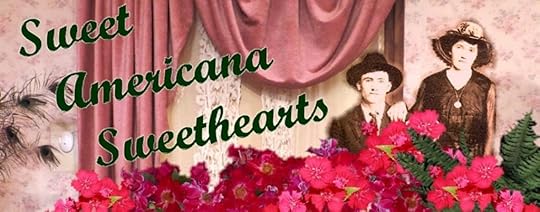
Sweet Americana Sweethearts Blog, Sweet & clean romances in North America between 1820s & 1920s [Image Copyright Robyn Echols (writing history as Zina Abbott) and Sweet Americana Sweethearts]
I’m delighted to announce my affiliation with the Sweet Americana Sweethearts Blog. It features authors of Sweet & Clean romances set throughout North America between the years of 1820 and 1920.
Current list of participating authors include: Angela Raines, Shanna Hatfield, Zina Abbott, Kristin Holt, Linda Carroll-Bradd, P.A. Estelle, Leah Atwood, Amelia C. Adams, and Kathryn Albright.
Please bookmark the Sweet Americana Sweethearts blog site and JOIN! I’d love to see you there, interact with you in the responses, and share a common love of American history and the fictional stories set there.
Per our monthly author schedule, it’s my turn every month on the first Friday.
My first post on this site is LIVE as of last Friday, August 7th: Five Things I Learned From Writing THE MENACE TAKES A BRIDE. This post includes short snippets from the book, an explanation about why he (Garth) is a ‘menace’, and the top five Things I learned From Writing this 92,000 word book. It’s the first book in The Husband-Maker Trilogy. The second is available and the third full-length romantic comedy, sweet western historical romance is soon to come.
I’m up next on Friday, September 4th. Can’t say yet what my post will be about… but I’m planning on sharing significant reveals about a new release. Stay tuned! Please plan on joining the Sweet Americana Sweethearts and checking back here (www.KristinHolt.com), my home on the web, often. Of late, I’ve been posting fresh articles about many different 19th Century American West topics, three times a week.
Sweet Americana Sweethearts Blog
Copyright © 2015 Kristin Holt, LC
August 5, 2015
Fred Harvey, Marriage Broker
![Frederick Henry Harvey [Image: Public Domain]](https://i.gr-assets.com/images/S/compressed.photo.goodreads.com/hostedimages/1439048118i/15787660.jpg)
Frederick Henry Harvey
[Image: Public Domain]
Before the inclusion of dining cars in passenger trains became common practice, a rail passenger’s only option for meal service in transit was to patronize one of the roadhouses often located near the railroad’s water stops. Fare typically consisted of nothing more than rancid meat, cold beans, and week-old coffee. Such poor conditions understandably discouraged many Americans from making the journey westward. Options for dining along the rail lines (prior to Harvey’s eateries opening for business) offered ridiculously low quality food such that travelers were often discouraged from traveling, particularly through the southwest. Harvey saw a business opportunity, and opened his first depot restaurant in 1876, the Harvey House. The restaurant business soon grew to include hotels.
Fred Harvey must have known his entrepreneurial enterprise would meet a tremendous need for marriageable women in the west, hence his decision to require young, eligible employees to remain single for one year. Harvey probably counted on nearly all of those he hired to remain in his employ for precisely 365 days.
Harvey is credited with more than populating of the west with women. His efforts yielded the first restaurant chain in the United States. Fred Harvey and his employees successfully brought new higher standards of both civility and dining to a region widely regarded in the era as “the Wild West.”
In the spirit of western enterprise, …Fred Harvey became one of the west’s most active marriage brokers. In 1882, he opened his first restaurant in the sagebrush desert of Raton, New Mexico, by hiring “women waiters and mop squeezers” who had never been away from home. Young rural girls throughout the country penned eager applications to work in whistlestop restaurants along the Santa Fe Line, serving fresh fruit and filtered water to “distinguished” passengers, at stopover points that numbered a hundred in 1917, and ranged from Chicago to Galveston, Texas, to the West Coast.
“I Do!”: Courtship, Love, and Marriage on the American Frontier, by Cathy Luchetti
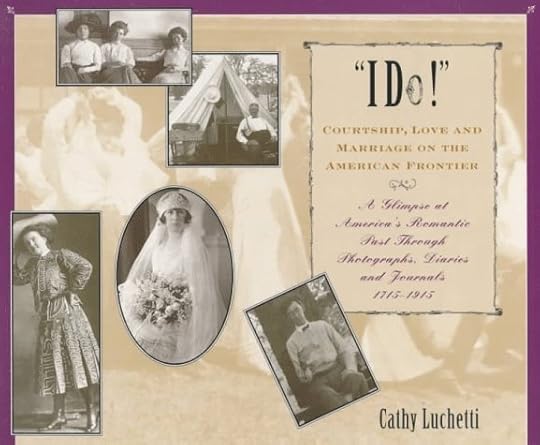
“I Do!” Courtship, Love, and Marriage on the American Frontier, by Cathy Luchetti
Even in the American West, food servers were almost always men, so employment of young females and the unfortunate euphemism of “waitress” for prostitute led to gross misunderstanding. Culturally, serving of food for money by an unknown woman was in essence a metaphor for a much deeper intimacy. But Harvey pushed forward and carried out his plan, though experimental.
Though Harvey’s business venture seemed to invite trouble, he battled the odds. Harvey insisted upon “young women of good character, attractive and intelligent”. His young female employees were strictly chaperoned, limited to precise visiting hours, required to dress decorously, and no profanity was tolerated.
Each girl’s contract required her to remain single for a year, to live in the chaperoned dormitory and entertain callers only in the ‘courting parlor’. Unspoken was the fact that she would save a handsome next egg on her salary of nearly twenty dollars a month.
Although profiting from male fantasy and female expectation, Harvey still offered women a chance to improve their working conditions, their social skills, and ultimately, their marital status. He attracted entrepreneurial women seeking a direct route to better jobs, and often, matrimony.
“I Do!”: Courtship, Love, and Marriage on the American Frontier, by Cathy Luchetti
One Harvey Girl, Bertha Spears began as a farm girl in Oklahoma. She happily complied with the Harvey House rules. She wrote, “I honestly never believed anything good would ever happen to me.” She obeyed the contractual rules of employment, as she was bound for only one year and upon completion, she could move on at will.
So popular were the demure, black-clad young women that toward the turn of the century, nearly five thousand of them had wed, many happily. They met distinguished male travelers–generally engineers and local merchants or ranchers who would order up a four-course meal, complete with capron, roast sirloin of beef, and seven vegetables, and then fell in love with the spry young waitress who could be enticed into the courting parlor if the right man came along. For a period of time, Fred Harvey “kept the West in food and wives,” as with many as 100,000 Harvey Girls employed between 1883 and 1950.
“I Do!”: Courtship, Love, and Marriage on the American Frontier, by Cathy Luchetti
Novelists have also set their books upon the historical backdrop of Harvey Girls:
This series by Cynthia Hickey of Christian Romances are about Fred Harvey Waitresses were previously published (with different titles) by Harlequin. At time of posting, all four titles are available to Read FREE with kindleunlimited.
OTHER Harvey Girl-setting Romances:
You may have heard of the 1946 movie called Harvey Girls, starring Judy Garland, the film version of Samuel Hopkins Adams’ novel The Harvey Girls.
Have you read a novel set against this backdrop of true history?
What fascinates you about the real-life Harvey Girls?
Copyright © 2015 Kristin Holt, LC
August 2, 2015
Top 5 Reasons AUTHORS of Western Historical Romance Benefit From Visiting Historical Museum Residences

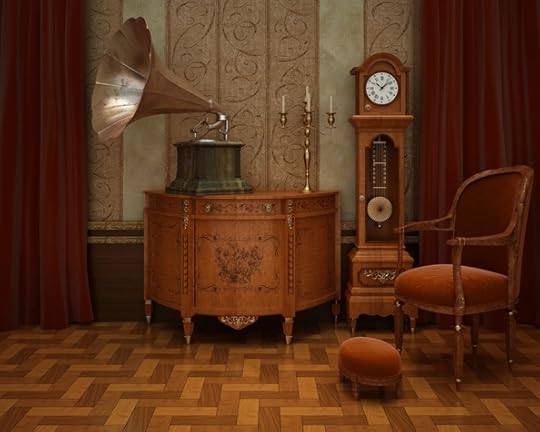

My Personal Top 5 Reasons AUTHORS (especially me) Benefit From Historical Residences:
1. GENERAL RESEARCH
Historical accuracy is essential. Authors understand readers are bright, knowledgeable, and often know more about history than writers. It behooves us to check our facts. It’s even smarter to constantly build upon our underlying knowledge of history.
Touring museum houses brings historic research into a kind of irreplaceable 3-D focus. While not exactly “hands-on”, walking through a true Victorian American West house will forever be more informative (and better remembered) than studying the facts in print.
2. IDEAS
My creativity has benefited from a magical spark within the museum houses I’ve visited. I can’t help but take note of little details that can benefit my characters and their stories that naturally arise from the setting. I need to add “visit historic houses” to my list of responses for the frequent question, “Where do you get your ideas?“
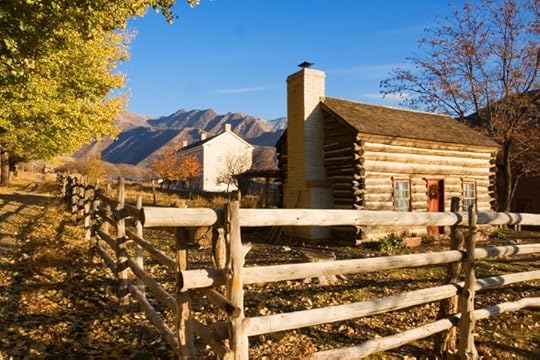
3. PERSPECTIVE
When I enter a restored house as a tourist, I see with my own eyes what mansions in the Western Victorian Era really looked like. I’ve gained a good deal of perspective about “mansions” of yesteryear compared to today’s mansions, their square footage and the differences in where that space was once allotted vs. present-day architectural preferences.
The Molly Brown House in Denver was considered grand and a mansion in its day, but it’s smaller than many of the new homes in my city. Master Bedroom closets were seldom much more than perhaps six square feet but attics were large (often the entire uppermost level of the home) and served long-term storage purposes and often sleeping space for live-in help. The concept of central heating was new at the end of the 19th century (and original to the Flavel House). Fireplaces remained common in most rooms (in addition to central heating).
Perspective assists me as an author to get the big picture, setting-wise, whether my characters live in a one-room cabin on the prairie or a grand mansion of the New Money California Elite. Having stood in uncommonly wide hallways (compared to those of today), and glimpsed skeleton keyholes in the highly decorated and polished wooden doors, ideas sparked in my imagination for The Menace Takes a Bride. I wrote this full-length historical romance with the many houses I’d toured in mind.
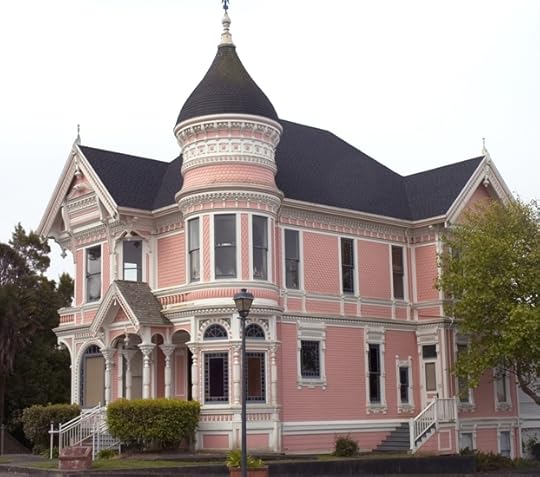
Victorian House in Eureka, California
4. TIMELINE
Paying attention to when houses were built and what elements were original to the house is priceless to historical romance writers. I track the historical timeline such that I know when progressive, cutting-edge, and newfangled devices became available in the applicable region of the country. Running water, flushing toilets, central heat, electric lights, gas lights, telephones, typewriters, telegraph, cash registers, and cisterns. The more my personal timeline fills in, the less additional research I have to conduct. The more museum residences I tour, the better the background setting of my fiction.
5. PATTERN FICTION AFTER FACT
I do pattern fiction after fact. I believe most authors of historical fiction do. After all, we want our readers to believe it could have happened. Fiction is supposed to mirror life.
The cabin in Gideon’s Secondhand Bride is very much like those at Heritage Village and Pioneer Village. The larger, more well-to-do homes in my The Husband-Maker Trilogy titles The Menace Takes a Bride and The Cowboy Steals a Bride are a mix of architectures from museum houses on the west coast.
Some of the houses I’ve visited: Sheldon House and Wells-Thorn House in Historic Deerfield, Molly Brown House, Old Sturbridge Village, This is The Place Heritage Park (specifically Heritage Village), Pioneer Village, Flavel House, Winchester Mystery House, Mount Vernon, Salem’s Phillips House, Abraham Choate House (now at Smithsonian), Leland Stanford Mansion, The Beehive House, and many more.
ALL of my titles are presently FREE Reads with kindleunlimited.
Top 5 Reasons READERS of Western Historical Romance Benefit From Visiting Historical Museum Residences
Authors, what Museum Residences have you toured?
What did you learn from your visits to restored or preserved houses?
Why is it important for you, as an author, to visit historic buildings in person?
Copyright © 2015 Kristin Holt, LC
July 30, 2015
Top 5 Reasons READERS of Western Historical Romance Benefit From Visiting Historical Museum Residences
You might think it’s easy to come up with way more than FIVE top reasons. Go ahead. Start listing.
It’s not as easy as it might seem.
After all, have you even thought about intentionally touring American Victorian Era museum houses that are open to the public? Why would you even want to visit a musty, old house? You read books set in the era, love them enough to pick up another, enjoy visiting the past and its various locales… so what’s to be gained by physically setting foot in a house that was built (and lived in) during the time period?
My Top 5 Reasons READERS of Western Historical Romances Benefit From Visiting Historical Museum Residences :
1. SETTING
Authors intentionally provide readers just enough detail about a setting (the interior of a parlor or front entryway, for example) to allow your imagination to take over and fill in the blanks. This is done with good purpose: readers tend to skim over the “boring” stuff (description) to get to the “good stuff” (action or dialogue). The more you have learned by personal experience in observing a Victorian home (simple, rural, fancy, ornate, uptown), the more prepared your imagination will be to fill in the setting.
2. DETAILS
Do you know what a mid-19th Century egg separator looks like? Have you ever seen a chamber pot? How about wardrobe or wash stand? A cast iron stove? Authors may mention household items in their Victorian-era books, but if you’ve never seen one, your imagination may draw a blank when asked to pull up a likeness. Having seen such items, whether on display in a museum or in the natural setting of a home built and lived in during the period, will enrich your reading experience more than you might expect.
Visitors will notice tiny things that may or may not make their way into a book. Heights of window casings. The “gingerbread detail” of expensive homes’ details. Lower (than today’s) handrails, narrower (than today’s) stair treads, often much higher ceilings. The Flavel House, built in the mid 1880s, in Astoria, Oregon has soaring fourteen-foot ceilings. Visitors might be surprised to learn this house, completed in the Spring of 1866, has two original flushing toilets, sinks with running water in almost all bedrooms, a in an upstairs bathroom, and a “modern” kitchen with hot and cold running water in the sink and an uncommonly large icebox.
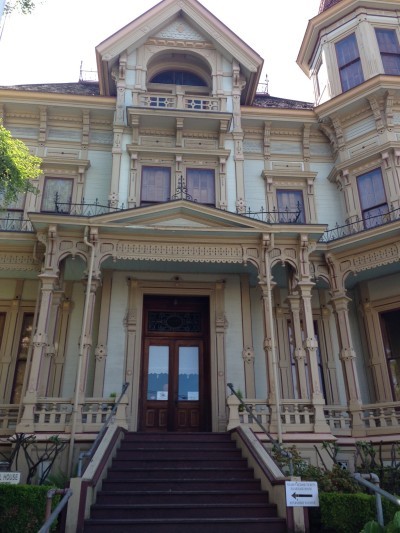
Captain George Flavel House Museum
3. CUSTOMS
Everyday customs and day-to-day normalcy in the Western United States has changed a great deal since the Victorian Era ended roughly 115 years ago. Well-to-do husbands built mansions with an adjoining bedroom for his wife as a sign of his success…and not necessarily because he didn’t wish to have the lady of the house close. Compare this frame of mind with the pioneer and frontier family who often lived in a single room house. Visitors to museum houses will take note of gas lamps affixed to walls, decorative oil lamps on tables, and details that were once every-day fixtures like candle extinguisher. It’s fun to look for pegs in cabin walls to hang aprons, clothing, pots and pans. In the upper-class historical residences, it’s fun to take note of a silver platters for receipt of calling cards. Not only does this broader perspective increase the enjoyment of historical fiction, but it explains much of the background of which these stories are set.
4. ENTERTAINMENT
Museum Houses are not only a most affordable form of entertainment, they make for an enjoyable family outing. In my experience, entrance fees run about $5 per adult (less for children), and all ages are welcome. Who knows? Discussions while touring an historic residence might spark educational conversations with the children and help a reader’s hubby/significant other to comprehend her fascination with reading historical romances. Hey, it’s worked for me.
5. HISTORY
In my experience, readers of historical fiction (all types, not just romance) love history for history’s sake. We’re fascinated by touring museum houses simply for the pleasure of it. We read historical nonfiction to learn more about the places, events, and circumstances we find interesting such as mail order brides or the Transcontinental Railroad. Entering the preserved and restored rooms and immersing ourselves in the space people lived in is the second-best thing to time travel.
Coming next: Top 5 Reasons Authors Benefit From Visiting Historical Museum Residences
Have you toured historic houses?
What do you remember most about those experiences?
What benefits of visiting museum residences would you add to my list?
Copyright © 2015 Kristin Holt, LC
July 27, 2015
Book Review: The Transcontinental Railroad
The Transcontinental Railroad:
The History and Legacy of the First Rail Line Spanning the United States
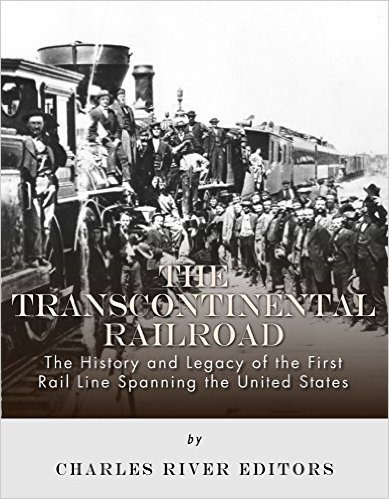
I recommend this book to fans of Western Historical Romance.
After all, So many books fans enjoy reading are set in context of the Transcontinental Railroad. Sometimes mail order brides make their way west on the relatively new railroad. Many fascinating romances are set in the booming mining town of San Francisco. Some stories involve military heroes whose roles in the west involve safeguarding the enormous “Great American Dream” project (as referred to within this book). Others are set in new villages that sprung up along the iron rails. Often, fans of the genre simply love anything entertaining that gives us more understanding of the American West.
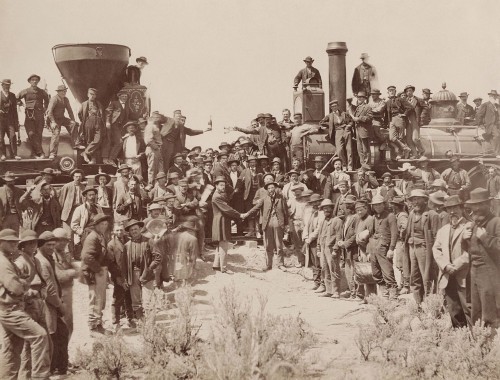
The ceremony for the driving of the “Last Spike” the joining of the tracks of the CPRR and UPRR grades at Promontory Summit, Utah, on May 10, 1869, Andrew J. Russell’s “East and West Shaking Hands at Laying of Last Rail.” May 10, 1869. [Image: Public Domain]
As part of my near-constant study of all things American history, I listened to the Audible edition of The Transcontinental Railroad. It’s a relatively short reflection on the period of time wherein the railroad was conceived, begun, accomplished, and completed. The print book contains 48 pages and includes pictures. The Audible edition has a listening length of 1 hour, 28 minutes. I found its brevity to be a positive selling point as every included detail proved important. Bob Neufeld’s narration is superb.
I listened to this book to refresh my comprehension of history, but immediately found myself lost in the storytelling. The editors cite personal letters, Harper’s Bazaar, newspaper articles, various personal journals (and more) with quotations lengthy enough to impart adequate context. I’m impressed the short volume covered so many aspects of the project: plight of the Chinese laborers, profound impact on Native Americans, bribes paid to Congress and the White House, and Theodore Judah‘s role in conceiving the railroad. Until this book, I’d never heard of Theodore Judah, and that’s a travesty.
Fans of Western Historical Romance will find this quick read provides valuable background information of United States history that enhances enjoyment of favored novels.
The Transcontinental Railroad is a FREE read with kindleunlimited.
Formats:
Kindle: ($2.99 OR Free with KU)
Paperback: $6.99
Audible: $5.95 ($4.86 for Audible members) OR 1 credit
Fiction Romance Novels with a railway component:
Many of these suggested fiction titles are Free reads with kindleunlimited.
While this list of Western Historical Romances (with a variety of heat levels) is far from a complete listing of those set along the Transcontinental Railroad (or other railways), I hope it may introduce you to a book or two you’ve not yet read. I admit I’ve not read all of them, so I encourage you to read reviews and make decisions based upon your own tastes.
What books have YOU read that have significant mention of trains or railways (or Transcontinental Railroad)? What titles do you recommend?
Copyright © 2015, Kristin Holt, LC
Kristin Holt's Blog
- Kristin Holt's profile
- 117 followers



